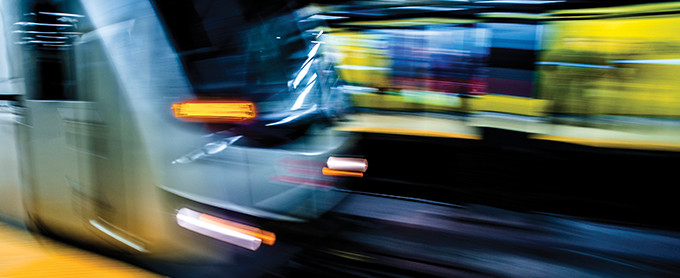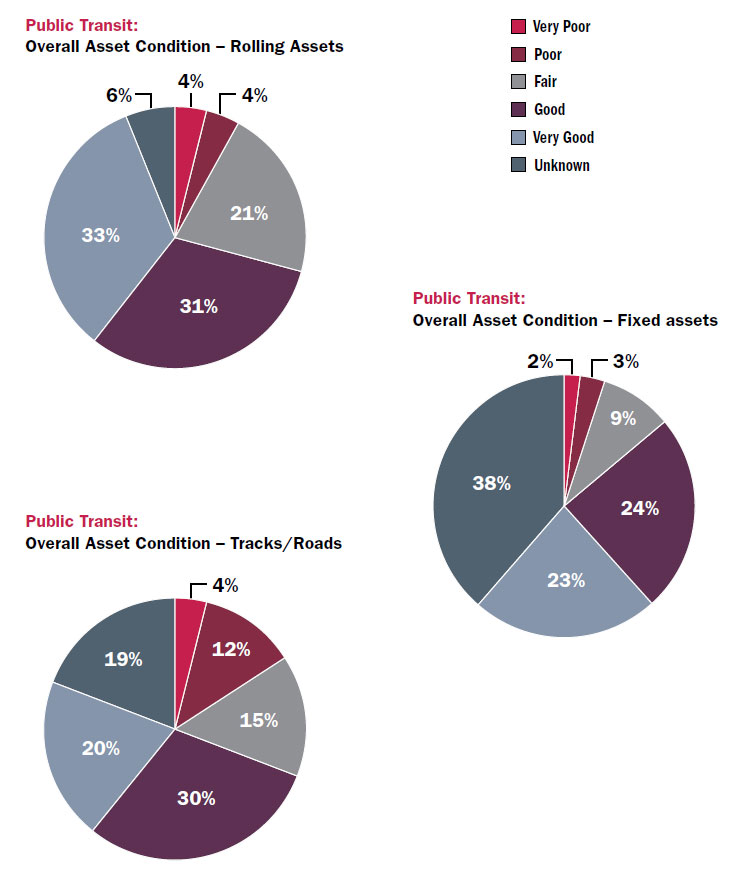Public Transit
Rated: Good

Cities of all sizes invest in public transit to reduce congestion and pollution, increase productivity and improve the quality of life of Canadians. Municipally-owned public transit assets include buses, streetcars, ferries, light rail and subways, parking and service facilities and transit shelters.
Our survey included rolling stock assets (i.e., buses, streetcars, ferries, heavy railcars, commuter railcars, light railcars, specialized transit) and fixed public transit assets (i.e., passenger stations/terminals, transit shelters, exclusive rights-of-way, parking lots, bicycle racks and shelters, passenger drop-off facilities, maintenance and storage faculties, transit exclusive bridges, tunnels, tracks, roads).
The current state
The condition of public transit assets varies across this category. Some relatively new types of infrastructure are in good condition and other assets, such as fixed tracks, are in much worse condition.
We assessed these assets using a defined scale and their age profile.
- Public Transit Rolling Stock assets may have a wide range of ESL. For instance buses and other motor vehicles have 7-15 years of ESL, whereas vehicles such as ferries, streetcars, and railcars have 30-40 years of ESL.
- Pubic Transit Fixed Assets may range from 30-75 years of ESL depending on the type of structure and the material they are made of. For instance, a passenger terminal may have 75-100 years of ESL whereas a bus shed may have 30 years of ESL.
By the numbers
